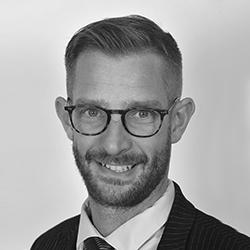- Home
- EN
- Our impact
- ProspeKtive
- The struggle for places!

The struggle for places!
January 2023
The experts
How does the organizational hierarchy materialize in the hierarchy of office spaces in the company?
Spatial privileges to preserve
We often have the image of top managers whose offices are located on the top floor of office towers. But why do managers in organizations still occupy a privileged place in company buildings? In a recent study, we looked at this question. Specifically, we sought to understand the processes by which individuals seek to maintain their spatial privilege in a company at all costs. When this is the case, these individuals use organizational space (offices and their organization/arrangement within the company) as an object of power.
Offices have a symbolic value, and their location in the company partly determines the organization and workflow. It is not surprising, therefore, that employees in companies will seek to monopolize the best places. However, not all employees are equal in the search for spatial privilege. Top managers decide first. Thus, the organizational hierarchy is replicated in the hierarchy of office spaces: this is called the struggle for space.
Strengthening strategic position before meeting business needs
To conduct our study, we took the case of an emblematic company in the banking sector. When its new head office was opened in 1995 (at the time the largest in Europe), it was planned to rethink the organization of the offices in order to facilitate teamwork, communication and collaboration between departments. However, this search for greater horizontality did not succeed. Worse, macro-zoning has only reinforced verticality, even though strategic studies intended to place departments according to their professional needs. As a result, the most influential top managers were able to give themselves a prime spot in an individual office. More broadly, this case highlights the multiple difficulties organizations face with their spaces, which they are constantly thinking about and reforming, in search of the optimal configuration.
Finding one's place in the organization, an endless quest?
Our research shows that the meaning that each person gives to the place (in the sense of the location of the office, the layout of the office) that he or she has been granted (or that he or she has granted himself or herself) in the organization differs from one person to another. Generally speaking, individuals seek to be close to power. Consequently, if they occupy a strategic position, they will seek to maintain this spatial privilege, justifying the idea that there is a struggle for position. Also, the configuration of the premises and the organization of the offices says a lot about the culture of the company and the greater or lesser prevalence of organizational hierarchy in the activities of the employees.
Since 2018, the current President of the banking group has decided to relocate his office from the top of the tower to the center of the tower. A decision that is meaningful by which the President wishes to show his proximity to the various departments. But this change will not be without changes in the location of other offices, like a game of musical chairs.
In a context of increasing depersonalization of offices linked to the advent of the flex office (Minchella, 2021), these questions about spatial privilege and the struggle for space are likely to be reinforced, between those who will be able to continue to keep a fixed, customizable office, and others who will have to resign themselves to occupying flexible, moving, non-customizable spaces.
Release date: January 2023




